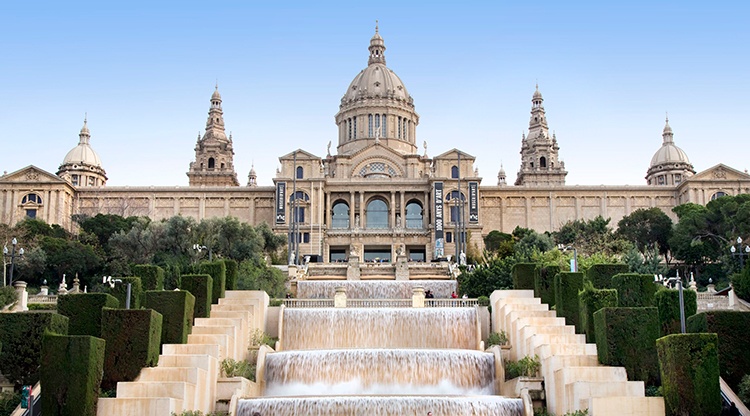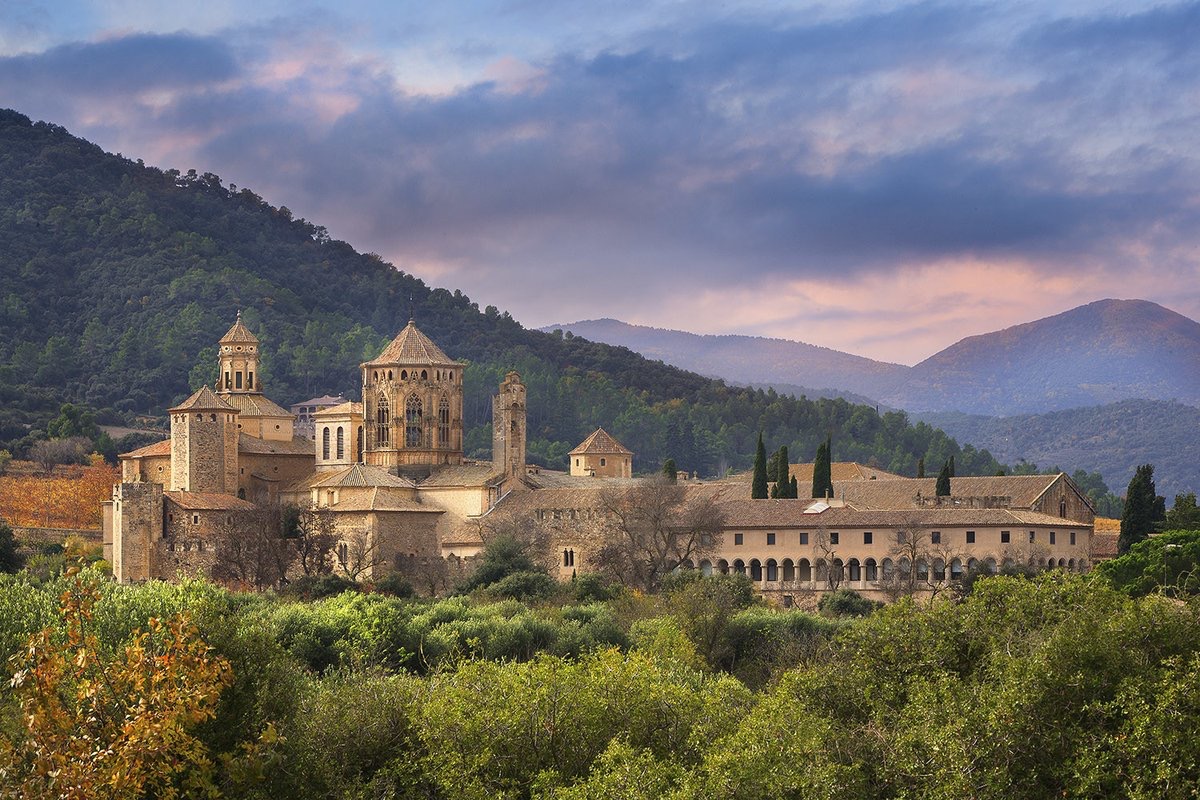Cultural history, natural landscapes, and gastronomy.
LOCAL TOURISM. GETAWAYS AND EXCURSIONS.

The tourist destination of Catalunya
Catalunya offers an extensive array of resources to enjoy its significant cultural heritage, landscapes, geography, gastronomic wealth, and even various sports activities. The region’s terrain is predominantly mountainous, with a large area formed by the Pyrenees and the Pre-Pyrenees, the Pre-Coastal Range, and the Coastal Range, occupying most of its territory.
Catalunya has the privilege of boasting a long list of architectural works included as UNESCO World Heritage sites, with notable examples like the architecture of Antoni Gaudí and Domènech i Montaner. Other significant sites include the archaeological ensemble of Tarragona, the Monastery of Santa Maria de Poblet, and the Romanesque churches of the Boí Valley, among others. All these sites have been selected for their exceptional qualities and as examples of the cultural or natural heritage they represent.
Catalunya’s architectural heritage spans thousands of years of history and includes Iberian settlements, remains of the first Greek city on the Peninsula, Roman legacies, Romanesque churches, Gothic cathedrals, and Jewish quarters. As for artistic movements, Catalan Modernism, which reached its peak in the early 20th century with Gaudí as its foremost exponent, presents unique constructions worldwide, such as La Pedrera, the Sagrada Familia, and Park Güell.

The cultural heritage of Catalunya is also noteworthy. It is rich and diverse, encompassing all disciplines and offering visitors monumental ensembles, unique traditional festivals, and numerous music, dance, or circus festivals.
Catalan museums strive to be worthy of all this material, and in the grand house of Catalan art, the National Art Museum of Catalonia, the most important collection of Romanesque art in the world is exhibited, along with Gothic and Baroque works, making it a must-visit for culture lovers.
The Barcelona region covers an extensive territory between the Cadí mountain range and the Mediterranean Sea, offering great landscape contrasts and a rich cultural history. The coast stretches along 100 kilometers, dotted with beautiful maritime cities and towns that have preserved their authenticity over the years. The imposing nature of the interior is another of its attractions: there are over 100,000 protected hectares, twelve natural spaces, and a biosphere reserve—natural landscapes of great beauty that can be visited in a single day: less than an hour from Barcelona, there is a whole world to discover.
PROPOSALS TO ENJOY LOCAL TOURISM

Catalunya has very attractive beach areas, such as the Costa Brava or the Costa Daurada, which, along with the Ebro Delta, form the bustling tourist or family areas. Other notable beach areas include Sitges and Vilanova i la Geltrú in the southern area of Barcelona or Maresme in the north.
It is also worth considering two unique spaces with very rich ecosystems: the Llobregat Delta and the Ebro Delta, the latter representing the most important aquatic habitat in the territory with a vast variety of environments and fauna.
Catalunya has numerous protected natural parks that offer the opportunity to connect with nature throughout the year, with the Aigüestortes National Park standing out for its emblematic landscape of spectacular mountains, lush forests, and green meadows.
Wine tourism is another option for visitors, whether local or foreign. This activity allows one to learn about the country’s wine economy and share different experiences depending on the region. Highlights include the wines from Penedés, Alella, Pla del Bages, Priorat, and Costa Brava.
Another recommended proposal is the Modernist routes, where one can learn about this architectural movement through palaces, factories, wineries, or romantic gardens. The principal icon of this movement was the architect Antoni Gaudí.
Finally, the Romanesque art and architecture stand out. Sanctuaries, hermitages, monasteries, medieval towns, and paintings attract visitors. Catalunya’s medieval past is well-preserved, with numerous itineraries offering different routes to thoroughly explore the country’s Romanesque heritage.

In summer, especially the season from harvesting to grape picking, family vacations proliferate, leading us to local tourism. Touring the villages of central Catalunya also allows us to review and learn about the country’s history. It is during this period that themed festivals, historical recreations, legendary or fantastic, proliferate. The traces of our ancestors remain erected in the form of castles, monasteries, ancient medieval nuclei, and modernist and industrial buildings, as well as in popular festivals and traditions, some of which, like the marine festivals of Carmen or those of San Juan, including those of the Pyrenees, have been recently declared World Heritage by UNESCO. Intact medieval villages with cobbled streets and rustic houses, such as Rupit and Tavertet, also remain. In Vic, one of the oldest cities in Catalunya, you can visit the medieval-origin market in its exceptional arcaded square. Gastronomic tourism is another great attraction throughout the territory, where local products that make up the typical dishes of each area are closely linked to wine culture, maintaining and recovering the high-quality wine economy. In addition to renowned restaurants where you can taste the typical gastronomy, visitors can complement their day with the possibility of visiting wineries that open their doors and offer numerous workshops and activities related to the field and vineyards, tasting homemade or artisanal products.

This needs to explore new places or engage in corporate activities complementary to the workday entails a need for transportation. ESTEVE Business Cars originated from this service commitment, specializing in the tourism sector. Corporate needs, whether for training programs, incentives, congresses, and tourism programs, family outings, and excursions, generate a need for mobility that increasingly demands to be more sustainable and environmentally friendly. Coach tourism provides this additional experience of enjoying heritage and corporate, touristic, leisure, or recreational activities in a more sustainable tourism program. All this helps maintain the confidence and security of clients and users in mobility services.

